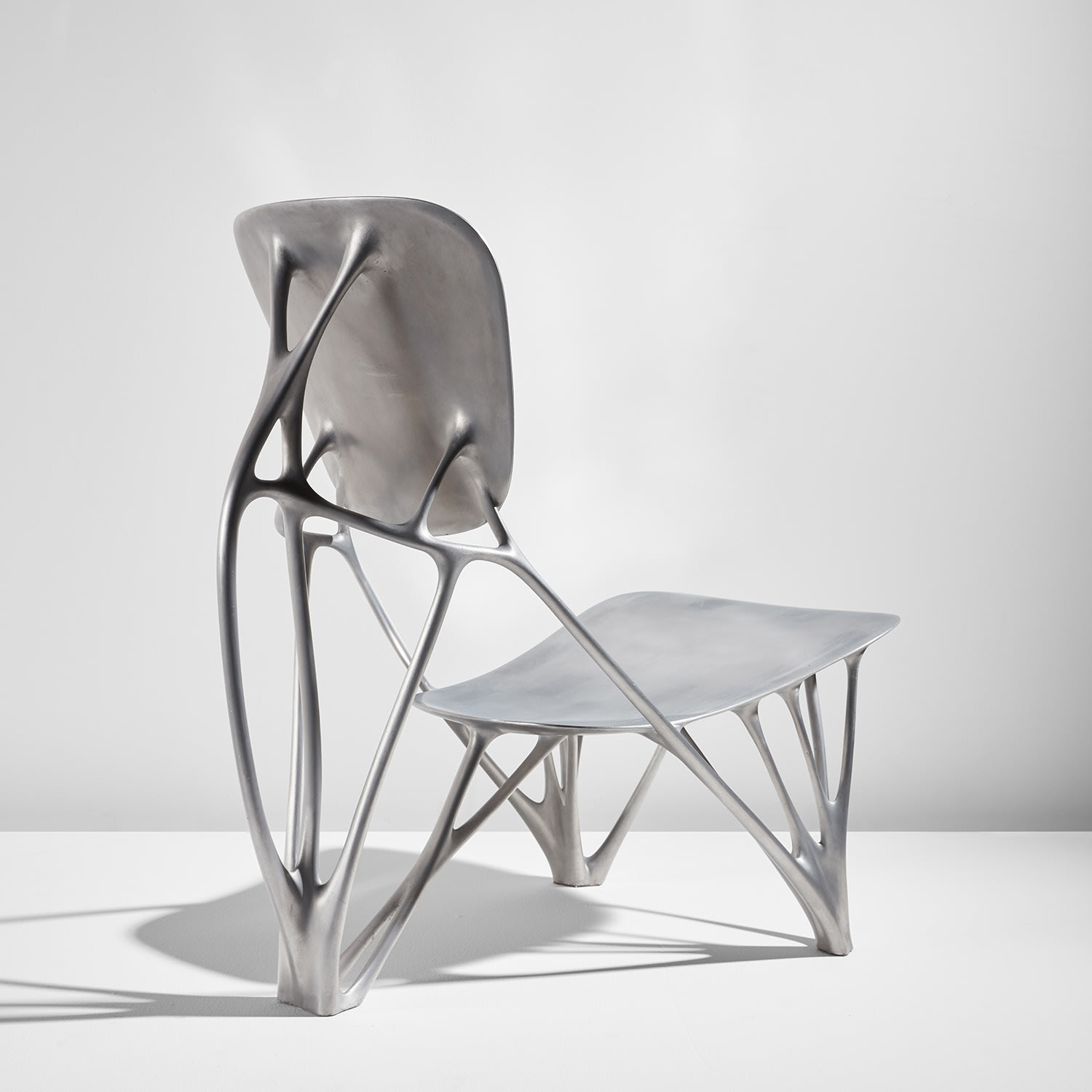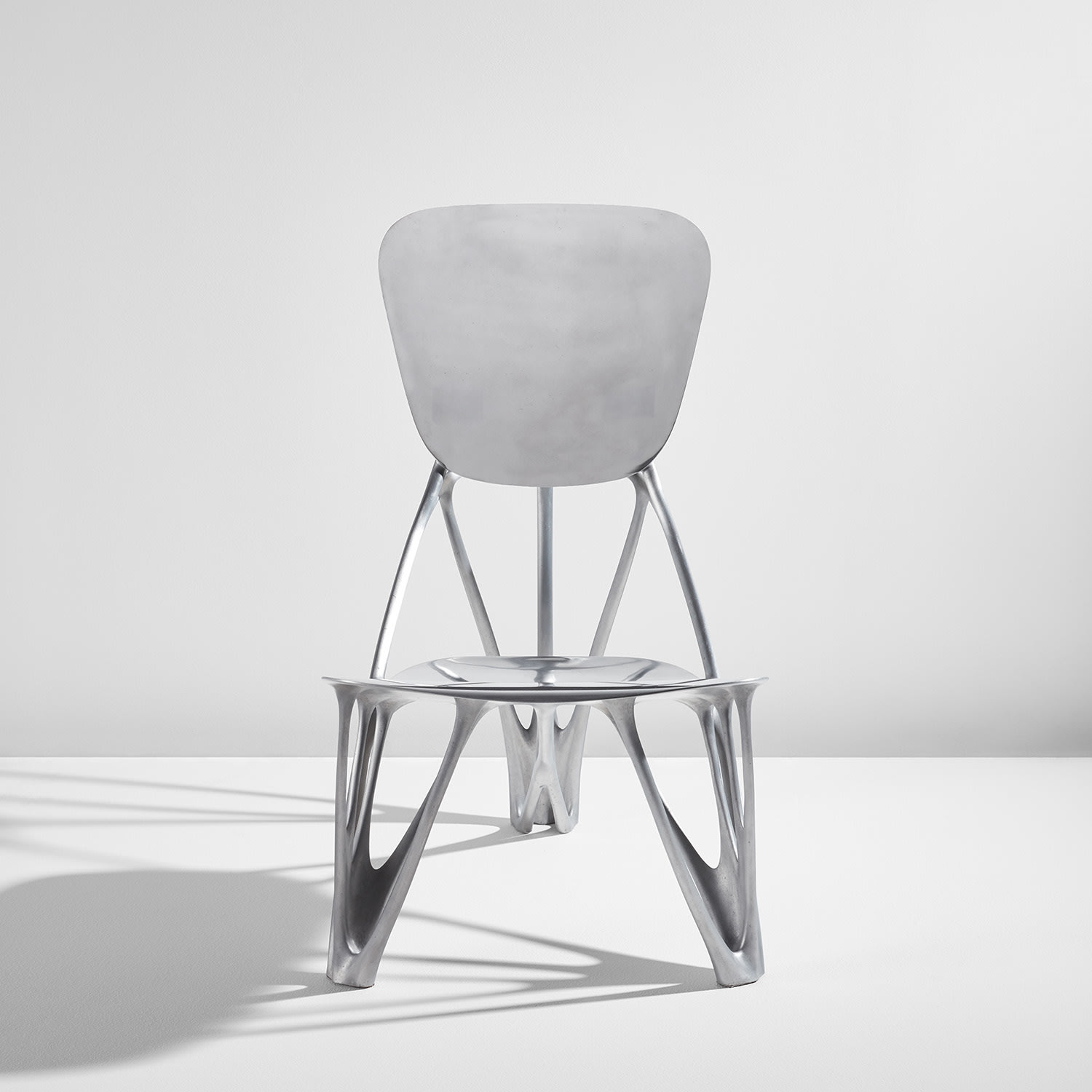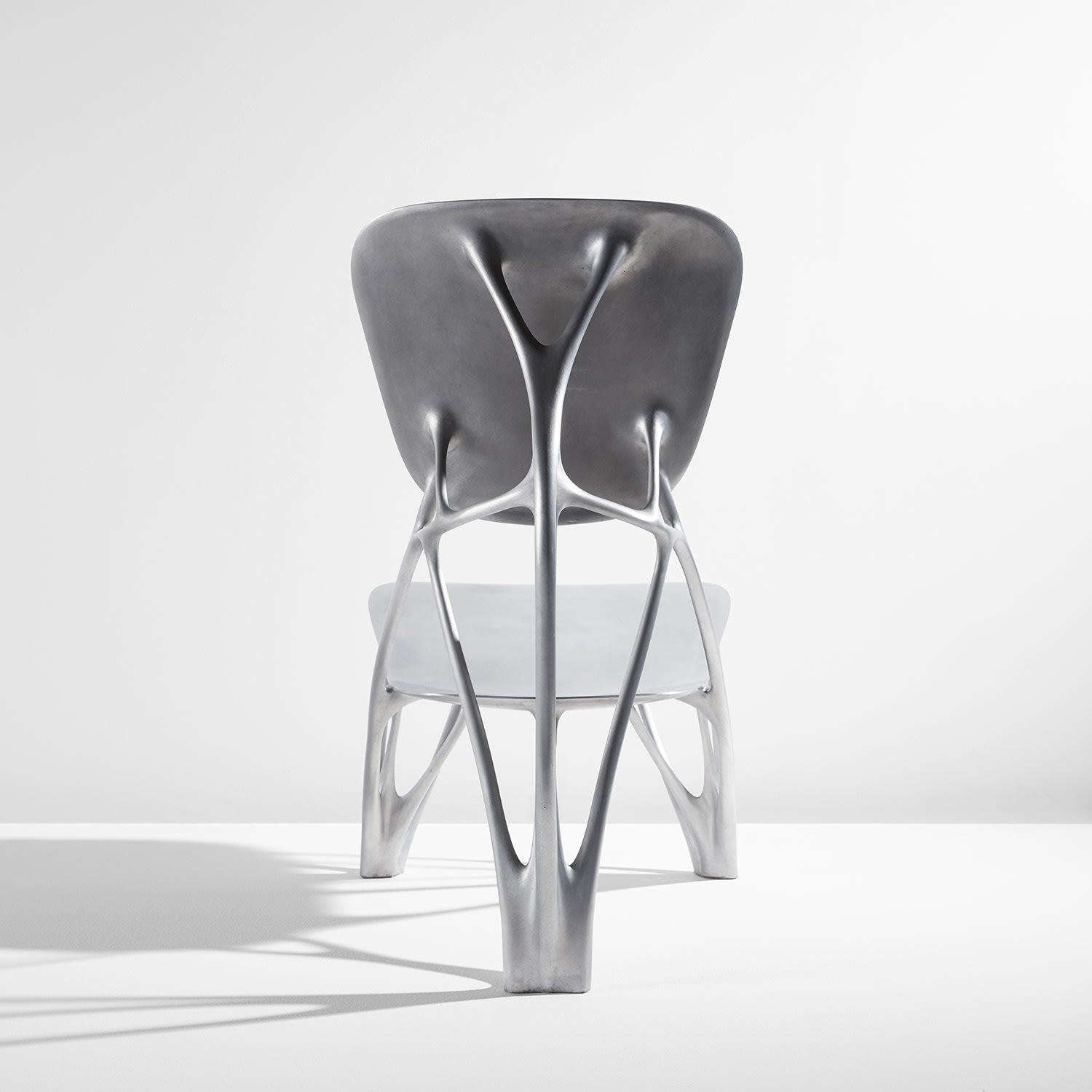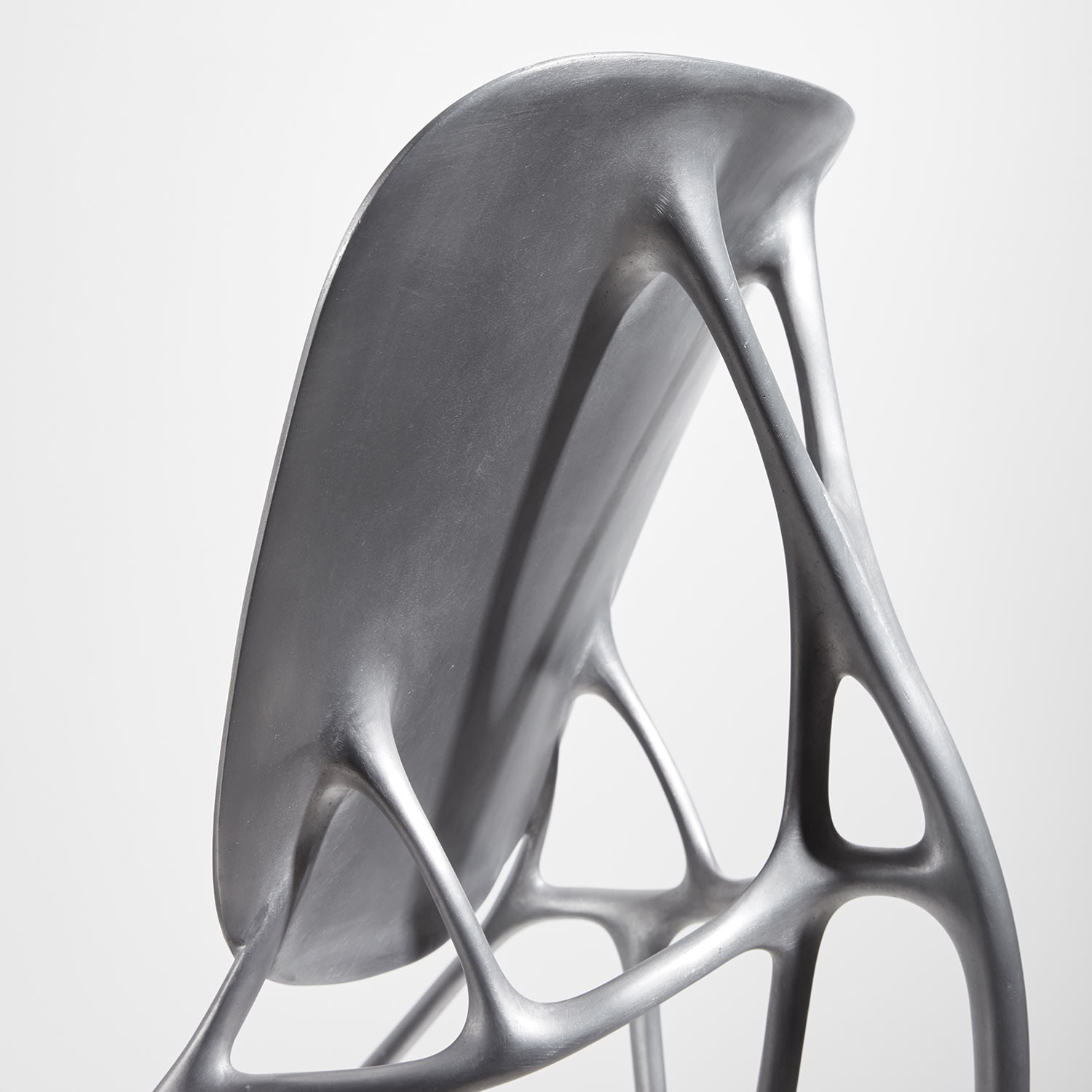











Property from an Important European Collection
45
Joris Laarman
"Bone" chair
2006
Aluminum.
30 x 17 1/2 x 30 3/8 in. (76.2 x 44.5 x 77.2 cm)
Produced by Joris Laarman Lab, Amsterdam, the Netherlands. Number 2 from the edition of 12 plus 3 artist's proofs and 1 prototype. Underside incised with the artist's facsimile signature and 2 / 12.